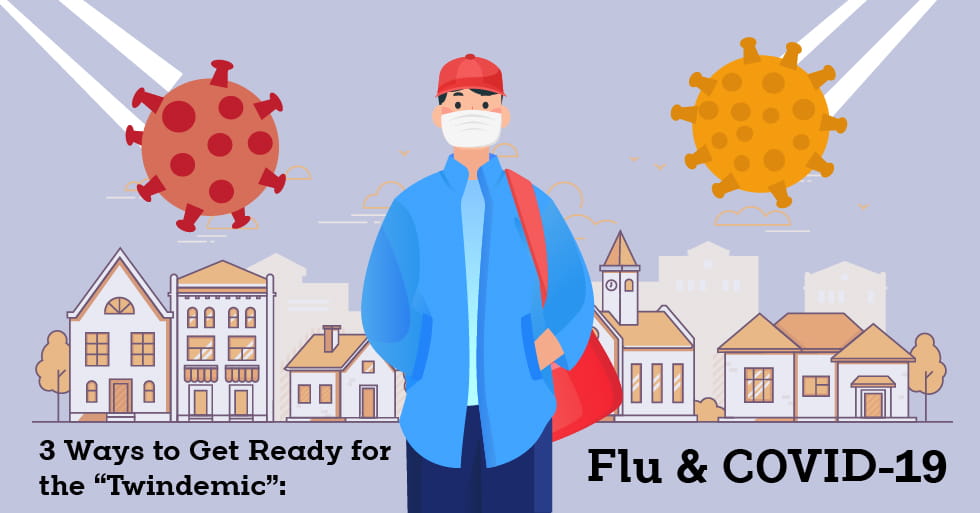3 Ways to Get Ready for the "Twindemic": Flu & COVID-19


As weather in the Northern Hemisphere gets cooler, our flu season begins. While social distancing and mask-wearing has kept the flu season at reduced rates in the Southern Hemisphere this year, there is no promise that those trends will continue for us in the north. In today's post, we'll look at 5 ways we can be better prepared for the flu season, and help make sure we don't make an already-difficult situation even worse.
COVID-19 first started its global spread in the fall of 2019, hitting full steam in February and March of 2020. This pandemic spread took place during the 2019-20 flu season, which was significantly curtailed thanks to the social distancing and mask-wearing practices put in place to slow the spread of COVID-19. What can we do to better prepare for this upcoming flu season?
1. Get your flu shot. By no later than the end of October, make sure to get your flu shot. There is an expected 75% increase in flu shots this year, and vaccine manufacturers are preparing in advance. However, the sooner you get the vaccine, the better. Why is it so important to get the flu shot, which doesn't protect us from COVID-19? Besides the health benefits of avoiding unnecessarily illness, keeping flu cases low means less pressure on our medical system, which is already pushed to capacity in many ways.
2. Don't assume you have the flu/cold/allergies and neglect treatment. It can be hard to tell the difference between COVID-19 and other seasonal symptoms. With COVID-19, there is great variation in symptoms depending on virus exposure, age, and health status, so you should never rule out COVID-19 without a medical opinion. Here is a brief overview of symptoms that may help, but as always, consult a medical professional with questions about your health care.
![]()
In general, the difference between the flu and COVID-19 is the first symptom: With COVID-19, it is typically the high fever (over100oF), while with the flu it is more likely the cough. While allergies and colds both may have you sneezing, typically a cold will give you a low fever (under 100oF), and with allergies, you usually already have a history of this seasonal response so you know what to expect and what is unusual. The hallmark symptom for COVID-19 is loss of sense of smell and/or taste, but this doesn't happen to everyone. If in doubt, call your doctor.
3. Continue following social distancing, mask-wearing, and hand-washing guidance. During flu season, washing your hands is critical to controlling your exposure to the flu as well as to COVID-19. But social distancing and mask-wearing continue to be important! While many areas of the US are seeing decreases in new cases, it is still very much in circulation. If we follow COVID-19 guidance, that will also help us control cases of the flu, which further decreases the pressures on our medical system.
![EOScu Logo - Dark - Outlined [07182023]-01](https://blog.eoscu.com/hubfs/Eoscu_June2024/Images/EOScu%20Logo%20-%20Dark%20-%20Outlined%20%5B07182023%5D-01.svg)





